Peter Holborn and Richard Cage at Suffolk Wildlife Trust Bonny Wood reserve.
Written and photographed for The Suffolk Magazine, April 2023
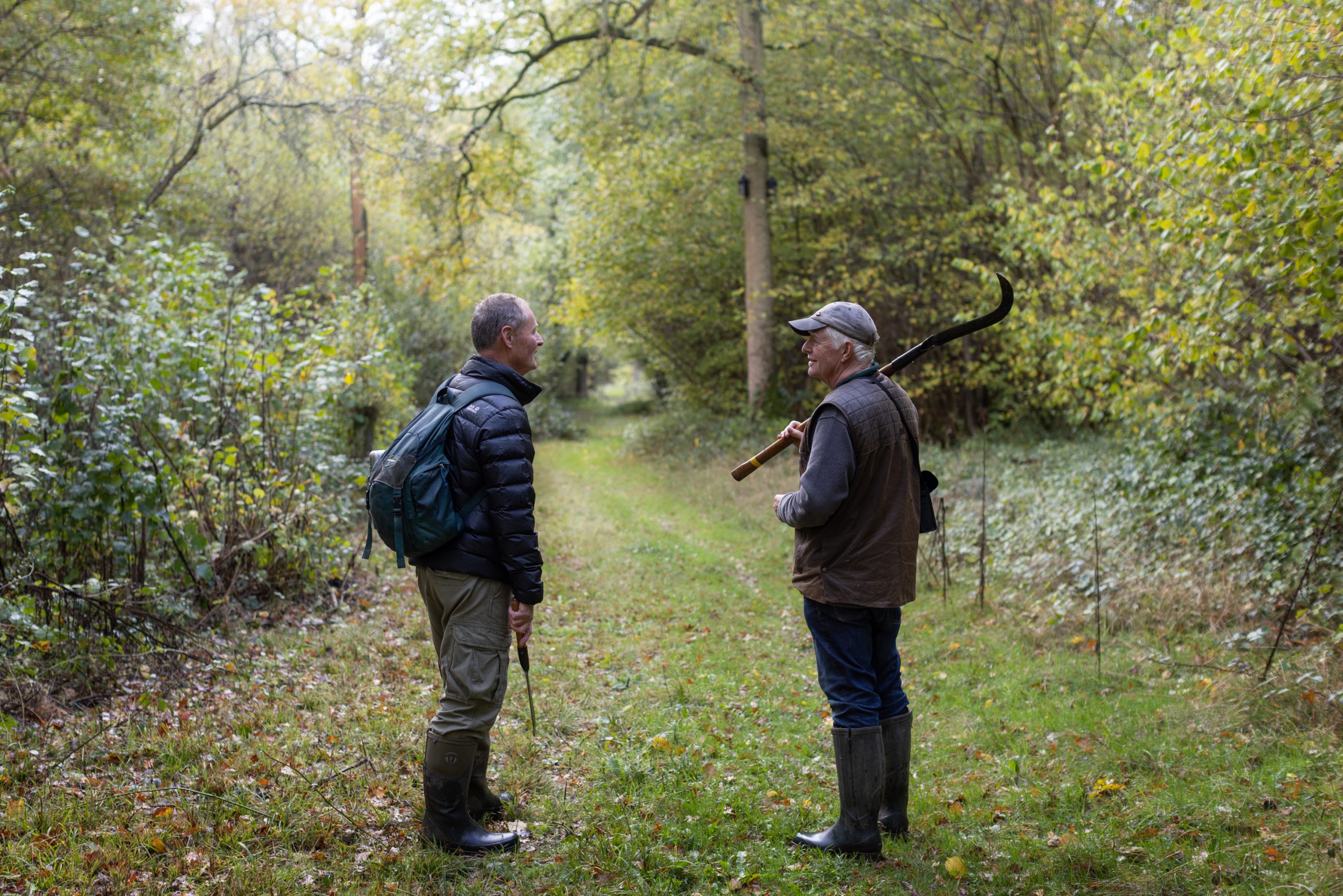
Peter Holborn and Richard Cage were in their thirties in 1987 when they started volunteering for Suffolk Wildlife Trust at their local Bonny Wood nature reserve, just outside Needham Market. Little did they know that the Great Storm would sweep through the country just a few months later and devastate Southern England’s trees, with an estimated loss of 15 million, amongst them many of our oldest and grandest specimens of elm, oak, ash and, in London particularly, plane. Veteran broadleaf trees, especially ones that had never been cut back, were particularly vulnerable to the high winds that came in Mid-October when the trees were still in full leaf. But Bonny Wood got off lightly. As Richard explained when I met him and Peter on a wet afternoon in October ‘Bonny Wood is mainly composed of ancient coppiced ash and hazel stools, so it has a lower canopy and is less susceptible to wind pressure. What losses the wood suffered in 1987 were really just the same as the regular management we conduct, helping to thin the woods and bring more light in’.
The coppiced trees’ resilience might be one of the reasons the wood’s history can be traced back to the first millennium: which also suggests it might be a remnant of the original primeval forest that dates back to the ice age and has never been cleared. But perhaps it’s more to do with its economic value and the stewardship of that value. Peter cites its being in continuous private ownership as the most likely explanation for its survival. He explains ‘Some local historians believe that some ancient woods may have suffered from the phenomenon referred to as ‘The Tragedy of the Commons’ where unregulated exploitation by local communities may have resulted in the demise of woodland; even where it wasn’t intentionally cleared for agriculture; possible extant examples of depleted common woodland being Mellis and Fressingfield Commons.’ On the other hand, Bonny Wood’s private ownership is documented since at least 1086, when it was mentioned in the Doomsday Book as being a ‘wood for fifty swine’. At the time it was part of the Manor of Barking, owned by the Abbey of Ely to whom it had been granted by a family of Saxon nobility when their son became a monk. By the 16th Century, with international trade booming and a rapidly growing navy, timber had increased in value to such an extent that Elizabeth 1 bought many wooded areas, including the Manor of Barking, by compulsory purchase. It was sold by James 1 in 1611 and then stayed in private ownership until 1953 when Lady Mary Ashburnham, the last of the Ashburnham Family who had owned the wood for almost 200 years, bequeathed it to Barking Parish Council.
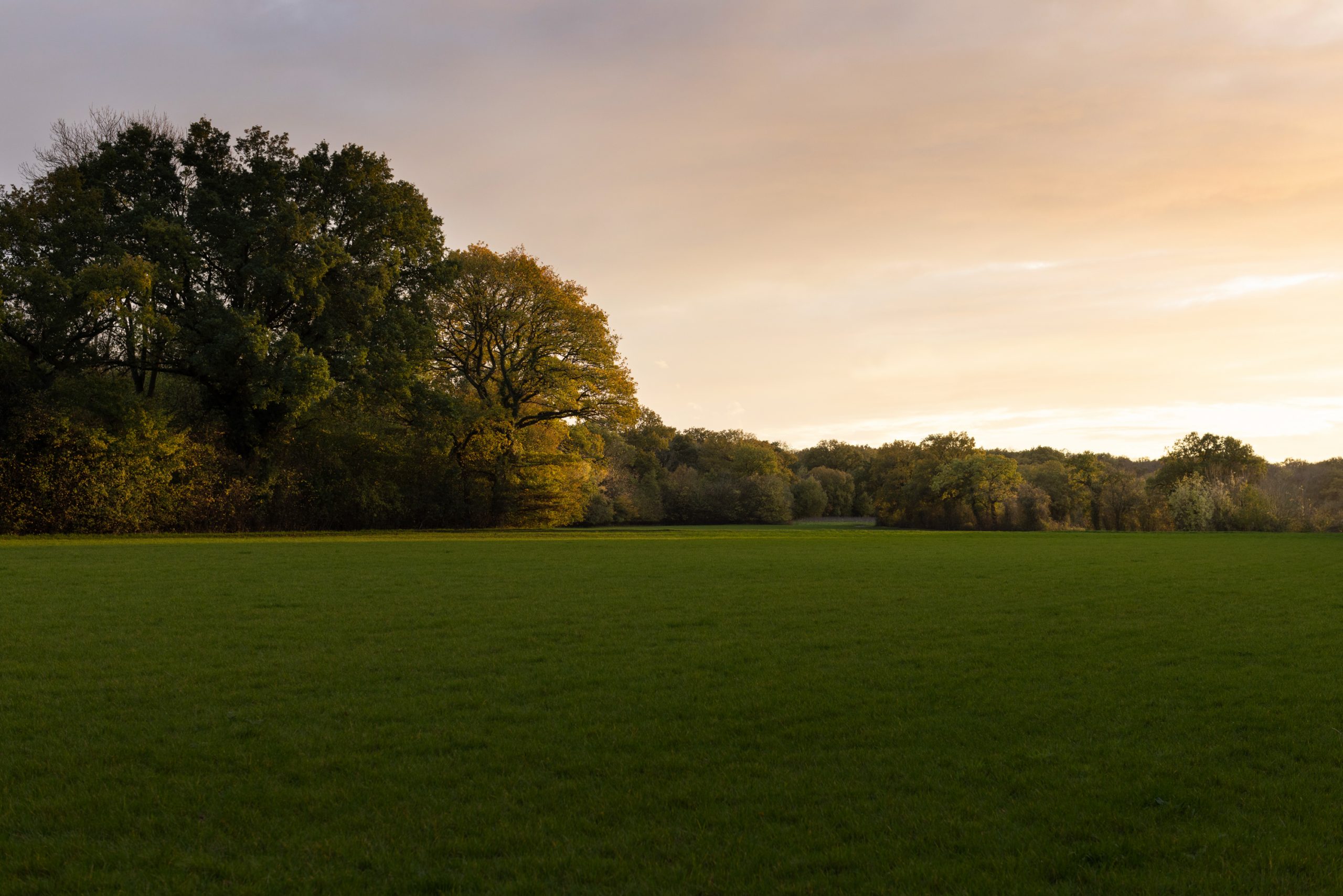
The Woodland Trust define ancient woodland as any that has persisted since at least 1600, when maps started to be sufficiently accurate. These woodlands are characterized by unique and complex communities of wildlife, which are not easily replicated. The disturbance caused by coppicing and utilisation, continued regularly over hundreds of years, only serves to enhance these unique ecosystems; undisturbed, closed-canopy woodland tends to suffer from biodiversity contraction over time, until a hurricane comes along and opens up the canopy! The real threats to Bonny Wood come from pests and diseases rather than high winds: the most significant at the moment is ash dieback disease, which could ultimately result in the demise of this species in the woods.
Peter and Richard showed me numerous examples of veteran ash stools that have died from the disease in recent years. Richard showed me a picturesque path through the woods that is now closed off to the public because of the dangers posed by falling branches from the dying ash trees.
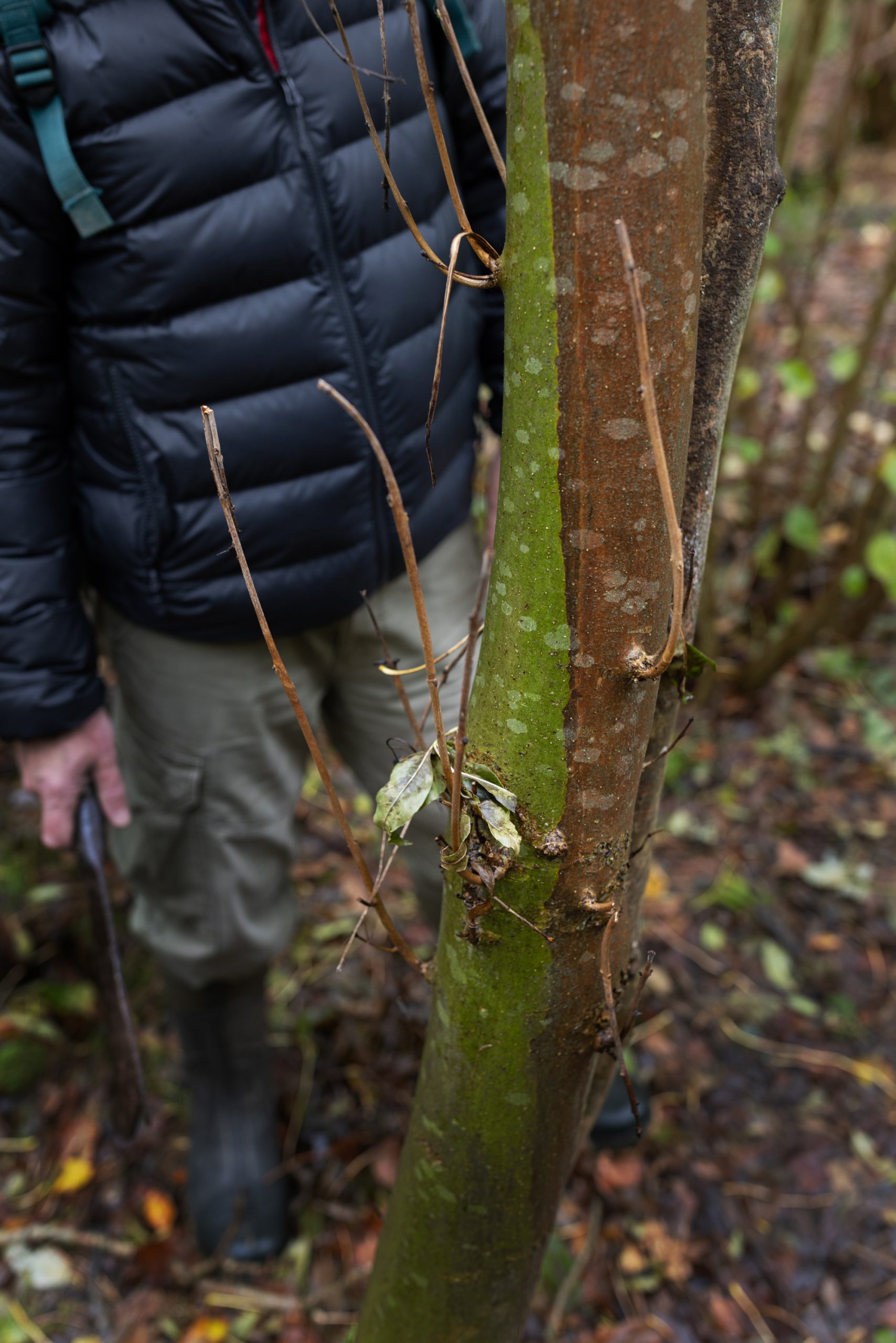
Typical signs of ash dieback
Terrible as this sounds, the loss of ash trees does not pose an existential threat to Bonny Wood, which has a diverse array of tree species including oaks, field maples, hazel and aspen. Peter showed me a wild service tree that he takes a personal pride in: ‘I planted it 20 years back after collecting seed from another area of the wood. I germinated it myself at home before bringing it here’. He goes on to explain that the wild service tree, although indigenous, is quite rare this far North; being more commonly found closer to the South coast, but we may be seeing more of them as the climate warms.
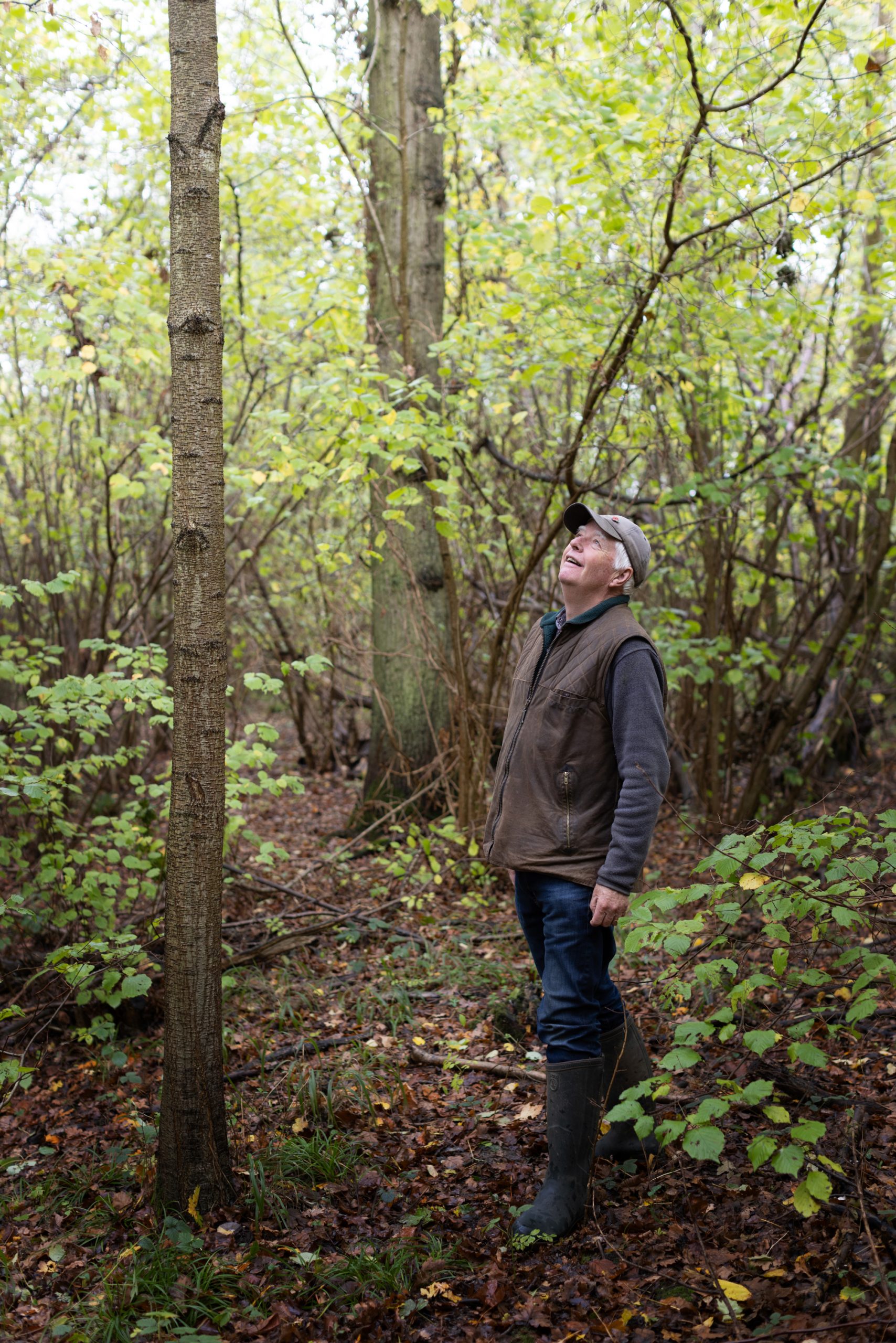
Peter with the wild service tree he planted himself 20 years ago.
This kind of personal connection is typical of the many reasons Peter and Richard have kept returning every month for 35 years, in Peter’s case, even after he’d moved out of the area. Richard explains, ‘You build up a relationship with a place, in many ways it becomes part of who you are, your own character and identity’. He describes this ‘sense of place’ as being just as essential to his mental wellbeing, as the exercise is to his physical health.
But also important are the relationships forged through volunteering: Peter and Richard’s long friendship being only one example. They tell me of other friends at the woods, such as Sid Smith, now 85 and a local poet having performed on Radio Suffolk, a great raconteur who will occasionally deliver a humorous ditty, off the cuff, on a tea break. And then there was the inimitable Donald Rose, sadly now passed, a larger-than-life character; he was well known for his loathing of cats and he enjoyed to recount the occasion when, approached by a fund-raiser who asked him ‘Could you donate something for cats-in-need?’ responded by reaching into his coat pocket and pulling out a couple of shotgun cartridges: ‘Will these do?’
Perhaps there is something special about friendships forged through this sort of unpaid work; the rewards of labour being in health, both physical and mental, rather than material gains; and bonds being strengthened by the sense of mutual ownership of intangible assets.
Many of the aims of good conservation can only be achieved through long-term commitments. For instance, a striking feature of the wood is its winding ‘rides’, the term for wide woodland paths. These have been adapted gradually from the historic rides that crisscrossed the wood and provided access for horse-drawn carts to take goods out. Peter, Richard and the other ‘vols’, under guidance of the Trust’s professional wardens, have selectively cleared scallops from the sides of the rides while allowing the opposite sides to grow out, which, over the years, has resulted in winding paths bordered by staggered canopy heights. Aside from being idyllic for an evening stroll, these paths offer increased opportunity for biodiversity and also mitigate the wind-tunnel effect of woodland rides.
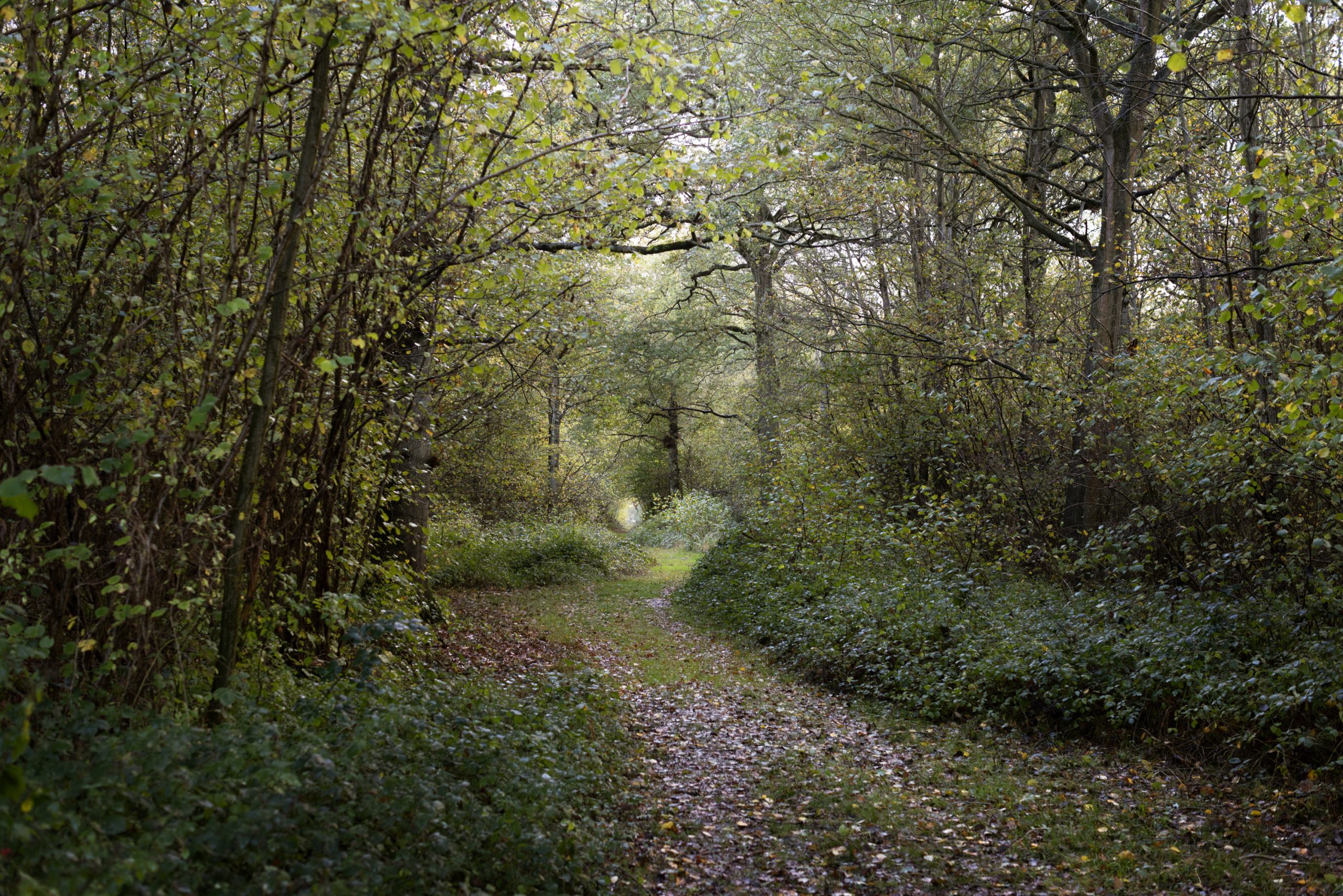
A winding ride, created from a straight path over many years.
Along the rides, small glades have also been created, which provide the best opportunities for biodiversity in a woodland setting. Bonny Wood is a particular hotspot for butterflies, with the wonderful purple emperor being a highlight, alongside the white admiral and silver-washed fritillary. Also found along the rides and glades are orchids, wood anemones and herb-paris. Sometimes even the rare and beautiful greater butterfly orchid can be seen; another indicator of ancient woodland, reliant on the particular, complex, interconnected web of life developed over centuries and millennia in that one specific spot, and just the sort of species that can’t be easily introduced to newly-planted woods.
It reminds one that when decisions are taken to sacrifice ancient environmental features to development, the ‘mitigation works’ will rarely ever fully compensate the losses to nature. It seems that natural environments, like the best friendships, only become of greater value with the passing of time, and a little careful management!